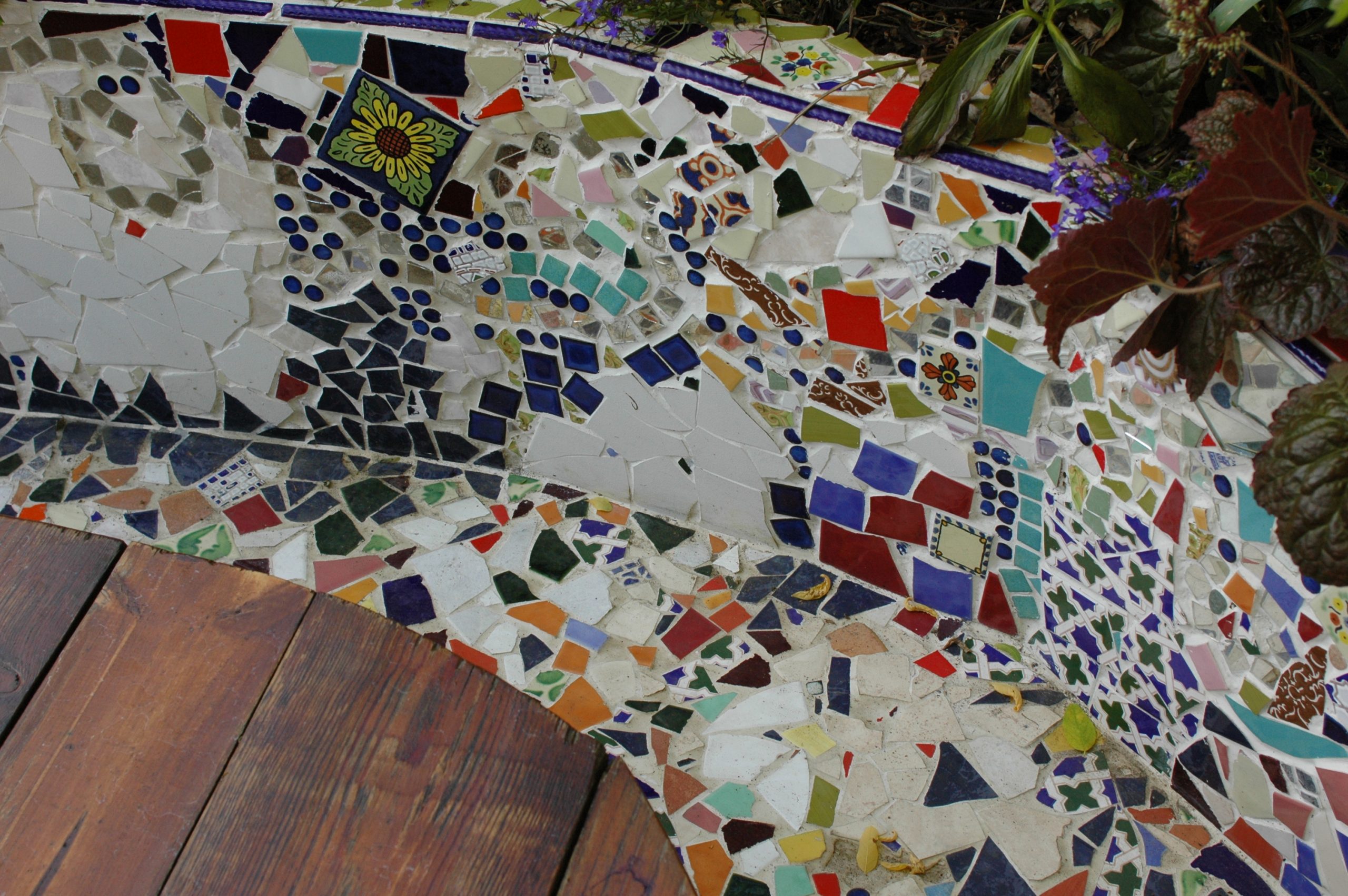

Please note, some artists also use small amounts of the thin-set mortar instead of adhesive (or glue) on the back of their tesserae (more on this in the next section). Then apply the tesserae with a strong adhesive (or glue), such as the one shown below. First, draw out your design with a pencil on the surface of your base. You may have a design already planned that you want to use. This could include small tiles, broken pieces of pottery, glass, or even seashells. The term tesserae refer to the materials you are using in your piece for the mosaic part. If you are using a metal base, you should also rough up the surface using sandpaper so that the tesserae will cling. Sanding the surface allows the tiles or pieces that you will use to adhere better. It is best to sand down the surface on which you will be applying the tesserae. This can be a small side table, birdbath, or maybe even an old chair. The Baseįirst and foremost, you will need to find the perfect base for your mosaic project. By properly adhering tesserae, then applying grout, and finally sealing the mosaic, you can be certain that your piece will be preserved as well as protected from water, and UV exposure and stay remarkably easy to clean. Let's start at the base and work our way through your mosaic project so you can complete a water-resistant work of art. In this article, we will discuss types of adhesives and sealants, so you can complete a beautiful, long-lasting project.
#Outdoor mosaic tiles how to
Keep reading for step-by-step instructions on how to mosaic a base and how to make it waterproof to be used or displayed either outdoors or indoors. The type of sealant you choose depends on what you prefer for the finish and the type of tesserae used. Apply several coats of sealant to the grout, and make sure to wipe it off of the tiles or glass for a flawless finish. Typical grout sealants used for mosaic pieces include penetrating, membrane-forming, and concrete types.

We've researched the techniques and materials you can use to waterproof mosaics.īy using the proper sealant, you can make any mosaic piece waterproof. Paint the back of your mosaic with acrylic paint.Are you working on a mosaic project? Maybe you are wondering how you make it waterproof.

Repeat process so two coats of sealant are applied.Before the sealant dries wipe the sealant off the tiles with a towel, ensuring that you remove all sealant.Paint the sealant directly onto the piece, allowing it to soak into the grout.It will however make it easier to clean and stain proof. If you have waterproofed your work correctly than sealing the grout is not necessary.The same sealant you used to seal your base can be used to seal the grout after your mosaic has been completed.If using ply or MDF as the base you could either grout over the edges or coat them with acrylic paint.pots) but it's not suitable for surfaces that requires waterproofing (timber, ply or MDF). You could use PVA as sealant on terracotta (e.g. A common sealant is PVA glue diluted in water (1 part PVA glue to 4 parts water).Allow each coat to dry completely before applying the next coat (30 minutes to 1 hour).For timber, ply and MDF apply 3 coats for indoor use and 4-5 coats for outdoor areas (much better to over do than under do).Pay special attention to the edges and any imperfections in the surface. Use a paint brush and apply the sealant to the front, back and sides of your board.This will create a surface to which an adhesive can easily attach. Score smooth surfaces (such as wood or fine plaster) with a sharp implement.Ensure that the surface is cleaned of all debris.Seal your base 24 hours in advance of when you plan to work on your mosaic.With concrete, terracotta and compressed fibre cement (CFC) use a single coat of sealant or primer to ensure good glue contact (the sealant is acting as a primer rather than a sealant).Sealing your work with a waterproof product is essential if you are using timber, ply or MDF as these surfaces are extremely porous and prone to water damage.Your local tile store should be able to advise you on the right product for your project.Waterproof acrylic sealants are best for outdoor projects or ones that are exposed to water, and a water resistant acrylic product for indoor projects.If your work is exposed to weather or water you need to choose a sealant that is waterproof rather than water resistant.Sealing your work is important as it keeps moisture out of the backing board and gives the glue something to adhere to. Sealing is an important step in the mosaic process as it waterproofs the piece, improves the sticking power of the adhesive and stain proofs the final piece. Home / How To Mosaic Techniques & Projects / How to Seal Your Mosaic Project


 0 kommentar(er)
0 kommentar(er)
